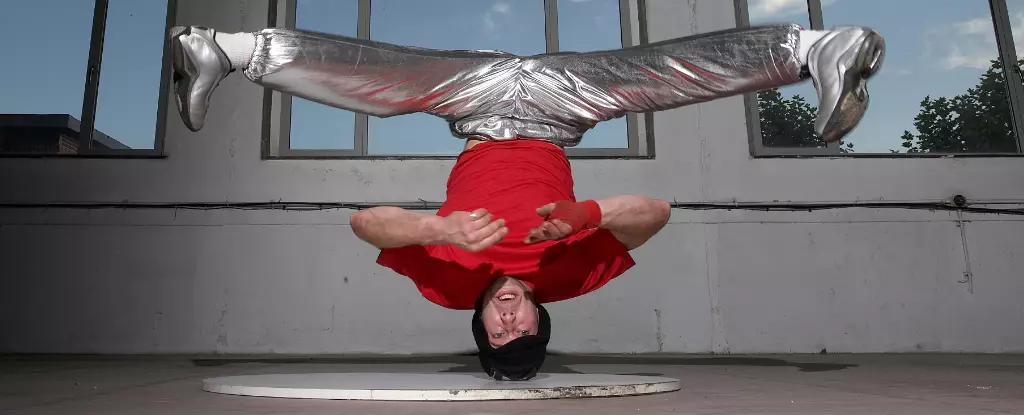Breakdancing, a dynamic and flamboyant dance style that originated in the streets, has captivated audiences and dancers since its inception. While it is celebrated for its rhythm, athleticism, and artistry, few people grasp the toll it takes on practitioners’ bodies. Examining injuries specific to breakdancers reveals the astonishing link between this high-energy dance style and a peculiar medical condition called “headspin hole.” This health concern serves as a reminder that behind the glamour of breakdancing lies a darker reality of physical strain and potential danger.
Recently documented in a 2024 medical case report, the ‘headspin hole’ phenomenon affecting breakdancers is a striking illustration of the body’s adaptive response to repeated trauma. A dancer who had been turning heads for nearly two decades developed a conical growth atop their scalp, affectionately dubbed the “breakdancer bulge.” This abnormality arises from the body’s effort to shield the skull’s bones from injury due to the intense forces experienced during headspins. As breakdancers repeatedly spin on their heads—often for extended periods—pressure on the tissues triggers an increased thickness in the epicranial aponeurosis, the connective tissue sheet that spans the top of the head.
This body reaction resembles the formation of callouses on the hands and feet, which protect underlying tissues from wear and tear. However, the notion that dancers might incur such a striking external sign of their craft—essentially a badge of honor—highlights a poignant irony. While many associate breakdancing with agility and finesse, the physical consequences can be severe, with approximately 30% of breakdancers reporting related issues such as hair loss or scalp inflammation.
It is essential to recognize that the headspin hole is merely the tip of the iceberg when it comes to the injuries rippling through the breakdancing community. Dancers are susceptible to a slew of musculoskeletal injuries, ranging from wrist sprains to knee and ankle issues. Particularly dangerous moves like the “windmill” and “backspin” can exacerbate existing pain or provoke new injuries, such as bursitis—an ailment characterized by the inflammation of protective fluid sacs around the vertebrae. Indeed, the high-impact nature of breakdancing necessitates careful attention from both practitioners and coaches to mitigate harm.
More alarming still are severe injuries that can occur while executing demanding moves. There are accounts of dancers suffering from broken necks and other serious trauma; some have been left paralyzed as a result of pinched nerves, like Ukrainian breakdancer Anna Ponomarenko. Fortunately, she managed to recover and earn a spot representing her country at the upcoming Olympics in Paris 2024, a testament to her resilience and determination.
Drawing a parallel between breakdancing and other athletic endeavors, it’s not surprising that the incorporation of protective gear can substantially diminish the risk of injuries. While helmets and knee pads may not be the most stylish additions to a dancer’s ensemble, they can be critical for safeguarding against the dangerous falls and impacts that can occur during performances or practice. The challenge lies in the cultural perception of breakdancing as an art form, with some dancers being reluctant to compromise their style in favor of safety.
Interestingly, the cone-shaped deformities are also seen outside of the breakdancing community. Newborns occasionally present with similarly conical heads due to various factors during birth. For instance, babies navigating through the birth canal may emerge with a temporary deformity known as caput succedaneum, a fluid collection under the scalp due to prolonged pressure. In contrast, craniosynostosis—a condition where skull plates fuse prematurely—affects around one in every 2,000 live births. Awareness of these variances can be beneficial for new parents who might notice such shapes in their newborns and seek medical guidance.
Understanding these potential conditions not only informs parents about their infant’s health but also emphasizes the importance of early identification and intervention when necessary. While medical conditions like caput succedaneum typically resolve within days, craniosynostosis might necessitate surgical intervention, which underscores the need for vigilant observation in early childhood development.
Breakdancing can be a thrilling and passionate endeavor, but it is crucial for dancers to recognize the physical repercussions that come alongside the joy of movement. Whether it’s the development of unusual health conditions, the risk of significant injury, or the need for protective measures, awareness is key. As audiences cheer and celebrate the talent of breakdancers, it is equally important to acknowledge and support the dancers behind the moves, their health, and their well-being.


Leave a Reply